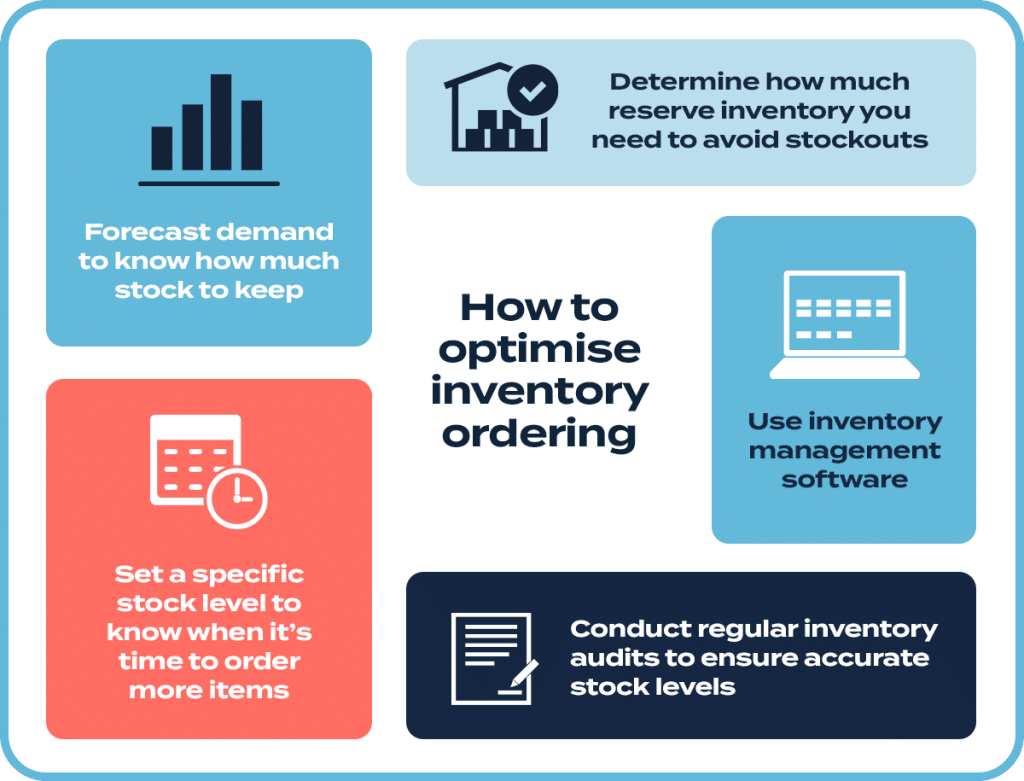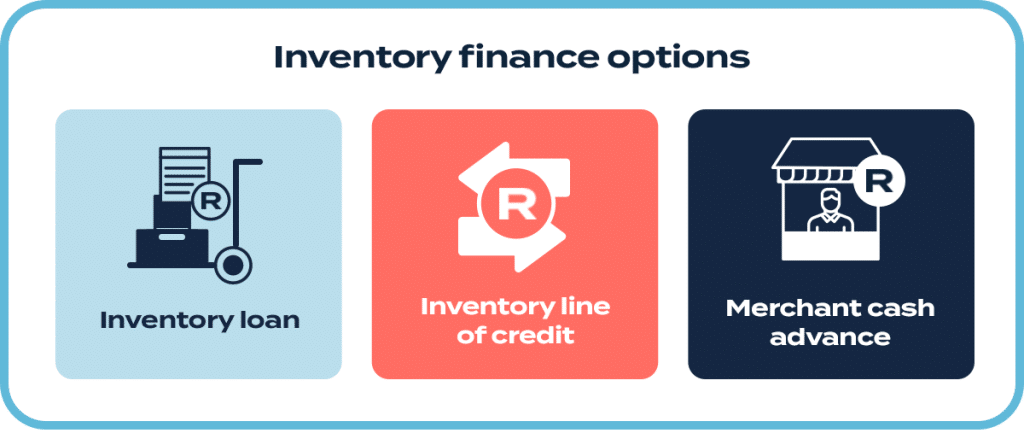Growing a business can be challenging without healthy cash flow – it’s the lifeline of your business. Many factors contribute to the healthy flow of cash in and out of your business. If customers or sales channels are slow to pay, you can’t pay your suppliers or employees.
Setting up an inventory management system for your business is very important and can improve cash flow. If you haven’t already implemented an inventory management system or you want to learn more about how it can improve cash flow for your business, read on to learn how to:
- Assess your inventory needs to forecast demand.
- Implement an inventory management system.
- Optimise inventory orders.
- Enhance supplier relationships.
- Improve cash flow management.
Before you jump right into it, you may be asking: what exactly is inventory management?
What is Inventory Management?
Inventory management is the process of overseeing and controlling the ordering, storage and use of inventory within the supply chain and using methods such as the periodic inventory system to track and manage the main types of inventory effectively. There are also different types of inventory management such as:
- Just-in-time management (JIT)
- Materials requirement planning (MRP)
- Economic order quantity (EOQ)
- Days sales of inventory (DSI)
Assess Your Inventory Needs to Forecast Demand
To forecast demand you need to predict how much inventory you’ll need in the future. To do this, look at your past sales to see what sold well and when.
Pay attention to any trends in your market and think about how long it takes to get new stock from suppliers.
Make sure you are not overstocking or understocking. Overstocking ties up capital in unsold goods, which can lead to cash flow issues and increased holding costs. On the other hand, understocking can lead to missed sales.
Implement An Inventory Management System
An inventory management system, also known as an inventory control system, is usually a software application used to track products your business keeps in stock.
Inventory management systems come with several functions and are either simple desktop-based database spreadsheets or software that you can run on your company’s server.
A perpetual inventory system is a method of tracking your stock in real-time. Every time you sell or receive an item, the system updates automatically. This means you always know how much inventory you have on hand without needing to do a manual count.
Choose inventory management software
A few of the top-rated inventory management systems recommended for manufacturers and retailers, according to Forbes, are:
- Sortly
- Katana
- Zoho Inventory
- Cin7
Install the software
Work together with your IT team to install the inventory management software.
Create an inventory list
Collect all product information, including images and prices, and categorise it. Use the information to create a clear inventory list.
Import and verify data
Import your inventory data into the system. Double-check this information to prevent errors that could affect your operations.
Run tests and go live
Run tests to identify any issues before launching. Once everything runs smoothly, go live with the system and monitor its performance to ensure it meets your needs.
Train your team
Organise training on how to use the new system. Training sessions can help your team understand the features and workflows.
Optimise Inventory Orders
Inventory optimisation is about striking the balance between having enough product available to meet customer demand and not spending too much money on storing that product.
If you can control your inventory, you can control your cash flow. If you’re thinking about optimising your inventory ordering, follow these simple steps:
- Analyse demand patterns
- Set reorder points
- Implement Just-In-Time (JIT) ordering
- Use inventory management software

Enhance Supplier Relationships
Instead of seeing supplier relationships as purely transactional, treat them as opportunities to grow credibility, help fellow businesses succeed and expand your company’s reach into new markets. Focus on building these relationships.
Improve Cash Flow Management
You can ensure that you always have the funds you need to purchase inventory at the right time. Creating a cash flow forecast can help you predict future cash flow needs based on expected sales, expenses, and inventory purchases.
You may want to access business funding to buy inventory, invest in implementing an inventory management system or take advantage of discounts. Funding can help you boost sales and generate cash quickly.
If you’re wondering how to get business funding in South Africa, your first thought might be to visit your local bank.
However, besides business bank loans, alternative lenders and fintechs like Lula offer business funding solutions that give you access to funding when you need it.

If you’re thinking of implementing an inventory management system, or need to stock up on inventory without it impacting your cash flow and don’t want to go through the process of applying for a business loan from a bank, here are two inventory financing options to consider:
1. Inventory loan
An inventory loan is a form of business term loan – an asset-backed, short-term loan that is repaid over a period. Here, the inventory financing company provides a certain amount of money to your business for the required inventory purchase and you can make monthly payments to repay the loan amount. Inventory loans are common when the spike in demand is unusual (once-off) rather than seasonal.
If this is the type of inventory loan you are considering, a similar flexible easy alternative is Lula’s Fixed-Term Funding, a lump sum of up to R5 million in business funding that can be paid into your account within as little as 24 hours. The borrowed amount is repayable over an agreed term of 3, 6, 9 or 12 months.
2. Inventory line of credit (LOC)
An inventory line of credit (which is a form of business line of credit) is a revolving line of credit where you have access to a given amount of funds that you can use any time you need. For example, if you have R1,000,000 inventory LOC you can borrow funds up to that amount to purchase inventories. If you use R200,000, your limit will be reduced to R800,000 and once you repay, your limit will go back to R1,000,000.
An inventory LOC is more appropriate for businesses operating in seasonal industries that regularly have spikes in demand. For those seeking a solution that offers quick access to funding, Lula offers a Cash Flow Facility that can meet these needs.
3. Merchant cash advance
A merchant cash advance is a type of business funding that is available for businesses that receive a lot of money from credit card transactions. Essentially, it’s buying early access to your expected turnover so that you can get the finance you need. A merchant cash advance isn’t a loan, instead, it’s a type of funding that allows businesses to get access to capital by using their future credit card sales / EFT transaction data.
Lula’s innovative assessment technology fast-tracks the approval process so that you don’t have to wait for capital when you need it most. You can apply for Lula’s business funding in minutes through a quick and easy online application process. To find out if you qualify – apply now.



